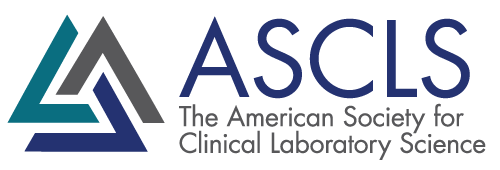Moving Out of the Laboratory Silos
The American Society for Clinical Laboratory Science’s Story
What follows is an interview with Brandy Gunsolus, DCLS, MLS(ASCP)CM, and Lezlee Koch, MT(ASCP), of the American Society for Clinical Laboratory Science (ASCLS) Patient Safety Committee. The ASCLS is the preeminent organization for clinical laboratory science practitioners. The ASCLS provides dynamic leadership and vigorously promotes all aspects of clinical laboratory science practice, education, and management to ensure excellent, accessible, and cost-effective laboratory services for healthcare consumers.
Tell us a bit about ASCLS, and the steps your organization has taken to address diagnostic quality.
“As a membership organization with more than 9,000 clinical lab professionals, students, and educators, we see it as our responsibility to teach laboratorians that they are a critical cog in the wheel that drives patient safety,” said Lezlee Koch, MT(ASCP).
With this in mind, ASCLS formed the Patient Safety Committee, of which both Koch and her colleague, Brandy Gunsolus, DCLS, MLS(ASCP)CM, are members. Once ASCLS and the Patient Safety Committee began educating its members about their role in patient safety, staff realized that laboratorians had been operating in a silo, and that errors were occurring due in part to a lack of understanding about the nuances of laboratory testing.
“Our profession has been so focused on quality that it’s very rare that there is an issue with the performance of a lab test,” said Gunsolus. “What we found was that errors almost always occurred in the pre- or post-analytical stage often due to small, preventable mistakes or miscommunications.”
Gunsolus said that errors can occur before a specimen ever reaches the lab—such as a specimen being mislabeled, an incorrect test being ordered, or a specimen being collected incorrectly—making accurate testing impossible.
“We knew that in order to prevent errors from happening, all the players needed to have a role in quality care,” said Koch. “So we decided to develop patient safety tools and educational materials not only for laboratorians, but for patients and providers.”
What steps did you take to integrate and educate those groups?
“Our first step was developing educational brochures,” said Koch. “We wanted patients and families to have the information necessary to have a meaningful conversation with their clinician, and we wanted to teach people how to collect quality samples so that pre-analytical errors don’t impact the diagnosis.”
One patient brochure they developed was on diarrhea and stool collection.
“We use those brochures in the family medicine clinic in my facility because they do a good job of explaining to the patient what true diarrhea is,” said Gunsolus. “We’ve heard from physicians that it has improved patient communication, and we can see that the utilization of stool testing has dropped considerably because patients aren’t receiving unnecessary tests after incorrectly stating that they have diarrhea.”
What about the educational tools you developed for providers?
“Laboratorians have a wealth of information, but we realized that there was a knowledge gap between the laboratorians and the clinicians,” said Gunsolus. “They weren’t really working together or communicating; they just stayed in their silos.”
When ASCLS branched into creating brochures for providers, the organization developed content not only on appropriate testing, but also on factors that can negatively impact quality results and the correct interpretation of those tests. For example, some dietary supplements or prescriptions can interfere with laboratory testing methods and produce an erroneous result, which has the potential to end in a diagnostic error.
“It’s important for providers to know that factors like a patient’s medication or previous conditions can cause an erroneous result and change the meaning of the test result,” said Gunsolus.
Two examples of such provider-facing tools were the drug-related lab test interferences and cardiac biomarkers brochures. To date, ASCLS has developed 14 brochures, all of which are available for download.
What has been the biggest barrier in developing these brochures?
“Since we are still breaking out of our silo, the topics of the materials produced thus far have been driven by laboratorians,” said Koch.
The team at ASCLS knows that in order to truly support patients and physicians, they need physician and patient groups to tell them what they need.
“That’s been our biggest challenge so far—but we’re starting to get information from these groups to ensure that our products meet the needs of clinicians, patients, and families,” said Koch.
That’s one reason Gunsolus and Koch were excited for the ASCLS to join the Coalition to Improve Diagnosis.
“Joining the Coalition was really our first step in going outside the laboratory to see what else we should be doing and how we can best get these products disseminated,” said Koch.
What advice do you have for other Coalition members who may be exploring similar initiatives?
Koch encourages all groups interested in improving diagnostic quality to adopt an ‘in this together’ mentality.
“We all have a role in the care of the patient,” she said. “We need to come together with physicians and other clinicians to figure out which pieces of a ‘problem’ happened within our own processes to make sure that doesn’t happen for the next patient.”
If there’s a problem that you would like to address that relates to laboratory medicine, the team at ASCLS wants to help come up with a solution. Contact the team at ascls@ascls.org.
Resources

Get ACT Update Delivered to Your Inbox
Want to see more content like this? Stay informed on that latest activities from members of the Coalition to Improve Diagnosis. Sign up for the ACT Update Newsletter.
